










 -
-
Successfully Automating Profits in Self-
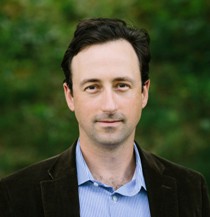 Brad Minsley
Brad Minsley
Principal & Co-
10 Federal
10 Federal | A Diversified Real Estate Company
Contact:
Interview conducted by:
Lynn Fosse, Senior Editor
CEOCFO Magazine
Published – November 13, 2023
CEOCFO: Mr. Minsley, what is 10 Federal?
Mr. Minsley: 10 Federal in a diversified real estate company specializing in self-
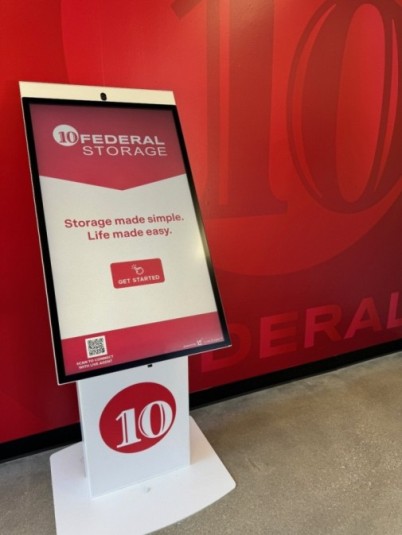
CEOCFO: Would you tell us about each of the divisions?
Mr. Minsley: Self-
CEOCFO: What are some of the challenges with an unattended storage facility?
Mr. Minsley: When we started automating the operations of a self-
Creating the technology was our first challenge. Having overcome that first challenge we are now in the unique position where we have gapped the field, and our next challenge is to successfully scale the size of the company and portfolio.
CEOCFO: What are some of the complexities?
Mr. Minsley: When we first started, there were various systems that you would use that were all siloed standalone products. When I say systems, I am referring specifically to the online advertising system, the management software system that kept the ledger of which units were rented to who, and the controlled access system that allows authorized renters through the vehicle gate. Initially those three systems were independent of one another, and we had to build the bridges between all of them so that someone could rent a unit online, record that new lease into the management software and have that person become an authenticated user of the controlled access perimeter. That was the first challenge.
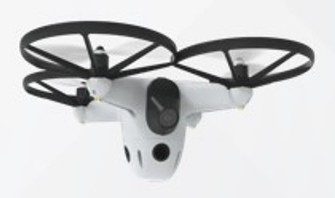 An example of another challenge is there was no work order system in our industry. If you think about a legacy model where a property manager is in the leasing office, then a tenant will walk in and tell the manager their door is broken. That manager receives the work order from the renter and is also going to be the person who fixes the door and completes the work order. With that workflow, the industry has never needed a work order system but with the automated model we still have local technicians who might only go by the property once a week to take care of it and clean it, turn units, but they are not in direct contact with the tenants. So, with the automated model the tenant would submit a work order to the website or kiosk or call center and then that work order would need to be assigned to the maintenance technician who will complete it. The system we built has cascading work orders, so once that maintenance technician has completed the work order to fix the door, completion of that work order creates a new work order back to the call center agent, for example, to call that tenant back and tell them that their door has been fixed.
An example of another challenge is there was no work order system in our industry. If you think about a legacy model where a property manager is in the leasing office, then a tenant will walk in and tell the manager their door is broken. That manager receives the work order from the renter and is also going to be the person who fixes the door and completes the work order. With that workflow, the industry has never needed a work order system but with the automated model we still have local technicians who might only go by the property once a week to take care of it and clean it, turn units, but they are not in direct contact with the tenants. So, with the automated model the tenant would submit a work order to the website or kiosk or call center and then that work order would need to be assigned to the maintenance technician who will complete it. The system we built has cascading work orders, so once that maintenance technician has completed the work order to fix the door, completion of that work order creates a new work order back to the call center agent, for example, to call that tenant back and tell them that their door has been fixed.
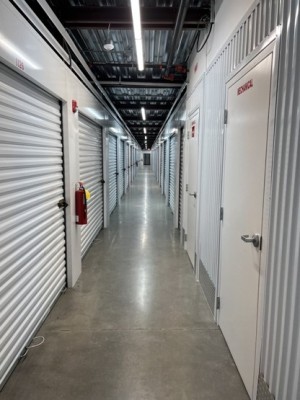 The third is the most profound solution we have created and has become a company unto itself, and it is called the DaVinci Lock®. It solves the issue of how a delinquent tenant that has been overlocked restores access to their unit after they pay their delinquent balance. If you are unfamiliar with what the delinquent process is in our industry or what an overlock is, basically you have your lock on your unit and if you fail to pay your bill, the property is going to put a second lock on your unit and that is called an overlock and you will not have access to your unit until you pay your delinquent balance that overlock is removed. In a legacy format, you go in and pay the property manager your delinquent balance, and the property manager will go out to your unit and remove that overlock. In the automated model there is no manager to remove that overlock and the tenant certainly does not want to wait for up to a week for the maintenance technician to come by and remove it. The DaVinci Lock® is an overlock that the maintenance technician puts on the delinquent units, but it has a menu of self-
The third is the most profound solution we have created and has become a company unto itself, and it is called the DaVinci Lock®. It solves the issue of how a delinquent tenant that has been overlocked restores access to their unit after they pay their delinquent balance. If you are unfamiliar with what the delinquent process is in our industry or what an overlock is, basically you have your lock on your unit and if you fail to pay your bill, the property is going to put a second lock on your unit and that is called an overlock and you will not have access to your unit until you pay your delinquent balance that overlock is removed. In a legacy format, you go in and pay the property manager your delinquent balance, and the property manager will go out to your unit and remove that overlock. In the automated model there is no manager to remove that overlock and the tenant certainly does not want to wait for up to a week for the maintenance technician to come by and remove it. The DaVinci Lock® is an overlock that the maintenance technician puts on the delinquent units, but it has a menu of self-
CEOCFO: Is that an outright sale and are you selling software that goes into the lock?
Mr. Minsley: We sell the physical DaVinci Locks to facility owners. Facility owners can just buy the lock and have a limited-
CEOCFO: Are people in general looking for self-
Mr. Minsley: The whole world has evolved to cater to on-
CEOCFO: How important is the look of the storage facility?
Mr. Minsley: I wish I could tell you that appearance made the biggest difference, but it just does not. The reason for that is that most of our leasing activity comes through the internet. What that tenant is most focused on is going to be price, proximity, and reviews. After all, a self-
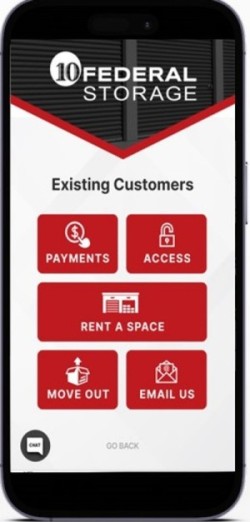 CEOCFO: Where are you geographically; what do you look for in your properties and how have you developed the network you have as far as storage facilities?
CEOCFO: Where are you geographically; what do you look for in your properties and how have you developed the network you have as far as storage facilities?
Mr. Minsley: 10 Federal operates four million square feet across 75 facilities primarily across the Southeast and Texas. In general, we prefer the Southeast and Texas on a macro level because those state economies are growing, and I believe they will continue to grow into the future. It is the concept that the rising tide lifts all boats. I favor markets with tailwinds like those.
As far as our acquisition strategy we are typically looking to buy properties that are underperforming their potential. They need to be nice, clean, and well-
We have a pretty sophisticated data science system that allows us to evaluate how big of an impact 10 Federal’s model can have on a facility. For example, a facility that rents at $60 a month might be able to achieve $100 a month rent on our platform. That is the difference that our automated platform can make, and our data science system helps us find the facilities that we can operate to $100 rents but are currently achieving $60 rents. Those facilities have become our acquisition targets.
CEOCFO: What led you to focus on storage?
Mr. Minsley: We got into it a little bit by chance. My brother Cliff and I, he is the co-
It did not take long for me to realize that the property manager was not being used efficiently. They spent most of their time sitting idly at the desk and I did not see that as a good return on our investment. We asked ourselves why that self-
Then you have self-
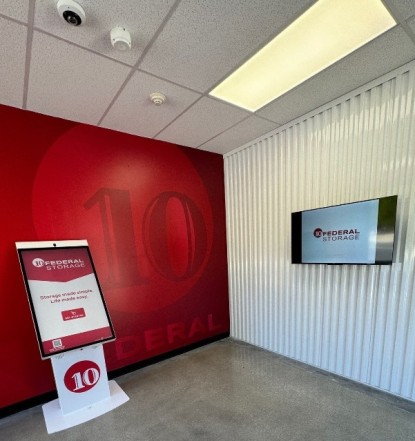
CEOCFO: Would you tell us about the funding you announced recently?
Mr. Minsley: We have had the good fortune to succeed in raising investment dollars. We are on our fourth investment vehicle now with the target of raising $100 million. We just passed $80 million raised as of October 1st. I expect we will achieve the $100 million goal by the end of the year, and we may even exercise an accordion that will allow us to take the offering up to a maximum of $150 million. We are making plans to raise $350 million next year with a hard cap of $500 million.
With the success our first two investment vehicles achieved, we registered on the radar of some of the nation's largest institutions and now we have the good fortune of several college endowments, a state treasurer's office, and several investment banks all looking to possibly make investments in our next offering.
CEOCFO: What are you on the outlook for as you grow?
Mr. Minsley: As I have gained experience fund raising from these institutions, I have learned that 10 Federal is at the intersection of two large paradigm shifts in our industry that these big investors are interested in. First is the theme of technology replacing labor, which in our case our automated platform is replacing labor. We no longer have property managers at the site, and as a result we have a more efficient operating expense profile, and that benefit goes straight to the bottom line.
Secondly, there is this concept called prop tech which is how technology can be used to enhance performance of real estate. Everything we are doing through automation and our data science system that lets us evaluate which facilities we should buy and estimates to what degree we can improve the performance has proven to be a tremendous value-
We check two boxes off at the same time and either one or the other would be generally very appealing to the larger investment community. By aligning with those two themes and demonstrating a proven track record through the successful sale of our first and second offerings we are achieving success in the capital raising world.
CEOCFO: Where does the human element come in?
Mr. Minsley: At the simplest form we still have a local maintenance technician that goes by once a week at a minimum. We have cameras that our property managers here and in Raleigh can view at any moment. That is just the tip of the iceberg. What we want to do in all aspects of our business is leverage technology to do our tasks as efficiently as possible. The cameras that we use have artificial intelligence. We run AI in the camera that can recognize exceptions like the vehicle gate being stuck open. They can run Internet of Things devices such as temperature and humidity sensors that can detect if the air conditioner may have malfunctioned at a property.
All these technologies together go from being passive tools where we are just passively viewing a camera, to becoming active tools that are actively informing us of exceptions to our operating tolerances. If a temperature is too high, if a gate is stuck open, our team is actively notified of these exceptions which just makes them capable of handling so many more facilities.
CEOCFO: What else is going on at 10 Federal that our readers should know about?
Mr. Minsley: I am an aviator so I might have a little confirmation bias but one of the things I am most excited about is the deployment of drones at our properties. We currently have drones at three properties that we can fly remotely from our headquarters in Raleigh North Carolina. The drone is equipped with AI capabilities that allow it to recognize a human for example and it communicates with the cameras on the property, so it becomes a 24/7 365 days-
CEOCFO: It sounds like you are having a lot of fun with this!
Mr. Minsley: I am having way more fun than anybody should be permitted to at a job, but I will count my blessings while I have them.
CEOCFO: Your site features a section about corporate sustainability; what is important for 10 Federal in that area?
Mr. Minsley: That hits close to home for my brother Cliff and me. Cliff was an environmental minor in his undergraduate degree, and I have gone through North Carolina State University’s certificate in renewable energy management program. We feel it is important to be great stewards of our environment for our current generation and future generations. We are committed to doing our part to try to advance those goals. We currently are installing solar panels at facility after facility to lessen the impact or draw upon carbon fuel sources. We invest in various techniques at the property to limit the need for irrigation and the use of water.
We have done studies that have demonstrated that just the automated model itself reduces the amount of driving an employee would have to do to and from the facility just due to less frequent trips and that lessens the impact on the environment. Those might be small things, but we know every bit counts and we are hopeful that the success that we have with 10 Federal and DaVinci can hopefully act as a springboard for us to invest, donate, and participate in future green technologies.
10 Federal | Storage | Self-